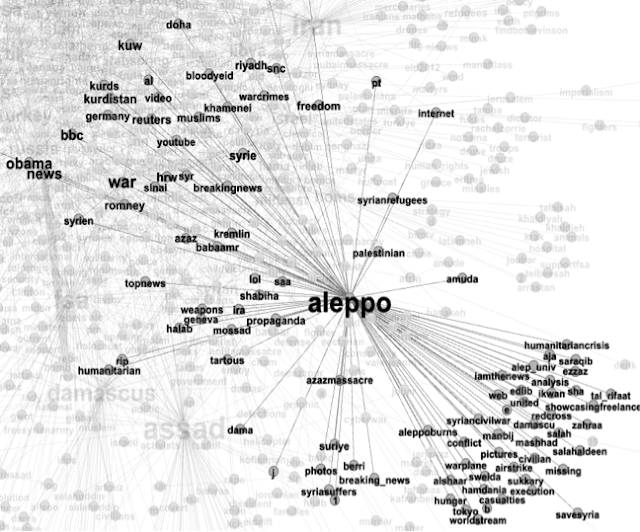Two new publications set out to investigate the urban structure from a different angle than the ever same physical structure perspective. Whilst it might not as such mark a general shift in the way cities or urban areas are investigated these two publication both take a very strong position stressing the social aspects, the experiential and the lived city. It is about people, individuals as much as society and culture.
Both books are part of much larger ongoing research project supported by large national bodies, but operating internationally.
The first of the two books is Suburban Constellations. Governance, Land and Infrastructure in the 21st Century. edited by Roger Keil published by Jovis. It is in fact some kind of half time summary of the ongoing project (2010-2017) Global Suburbanisms: governance, land, and infrastructure in the 21st century. Here the group not only reports on findings, but it is also a tool to define the status quo and look ahead at what is to be achieved further down the line. The project is mainly supported by Social Science and Humanities Research Council of Canada but investigates case studies from around the world. One of the very striking themes in this project is to bring case studies of all those areas of urban sprawl from around the globe together and compare/contrast them.
The second book is Handmade urbanism: from community initiatives to participatory models : Mumbai, São Paulo, Istanbul, Mexico City, Cape Town edited by Marco L. Rosa and Ute E and published by Jovis. Weiland and is a publication that draws on the Urban Age project at home at LSE and famously sponsored by Deutsche Bank. Here the Project is already into its sixth year and a number of books where published in its context. Most prominently the Endless City (2008) and Living in the Endless City (2011) both by Burdett and Sudjic. This new publication specifically focuses on the Urban Age Award which is organised by the Alfred Herrhausen Society as part of the Urban Age Conferences. With a focus on what is happening on the ground it is based on interviews with different stakeholders in each of the projects world cities. Those five cities are Mumbai, Sao Paulo, Mexico City and Cape Town. The editor of this new publication Ute Weiland has for the past five years coordinated said awards and worked closely with the local contributors in all five cities.
What is special on those two publications is the angel they portrait the urban world and the focus they chose for the respective research projects. The main topic is the rapid urbanisation, the fact that 80% of the world’s population will be living in urbanised areas by 2050 that urban means collective and that cities are in constant flux.
The publisher house Jovis has already a bit of a history with similar publications. There is for example Matthew Gandy’s Urban Constellations (2011) as one of the recent publications in this area. In fact Keil does specifically refer to Gandy in his introduction and the two books even share partly the same title.
Suburban Constellations. Governance, Land and Infrastructure in the 21st Century. being a work in progress brings together a body of writings much more experimental and investigative in comparison. Whilst this might be interpreted as a lack of focus or clear scope at times, it does surprise the reader with raw concepts and very direct lines thought making for a joyful read. Further more it does not require to be read from cover to cover, rather it can be picket up to read just one of the essays and read others maybe later.
It is structured along four topics: Foundations, Themes, Essay and Images and Regions. The first topic presents some ‘foundational thinking on suburbanisation’. The second topic ‘elaborated on those themes with emphasis on redevelopment, risk, boundaries, water, sewage, and transportation. These topics intertwined with the research project’s main points of Land, Governance and Infrastructure. Whilst this organisational structure whilst they might make sense from a project point of view it not as easily accessible for the generally interested reader.
 Image taken from the bad-news-beat.org / The waste lands of Fort Mcmurray AB.
Image taken from the bad-news-beat.org / The waste lands of Fort Mcmurray AB.
The are pieces like “Forth McMurray, the Suburb sat the End of the Highway” by Clair Major describing the context of one of Canada’s two purely business driven settlements just north of Edmonton fuelled by the large oil sands. Or on the other hand an Essay by Alan Mabin “Suburbanisms in Africa” where he discusses not just the suburbs as places but mainly suburban as a term and its meaning in a culturally very different context. He for example points out how difficult it is to translate the term suburb or indeed suburbanises to other languages. For example in places such the urbanised areas of South Africa where beside the local/traditional languages plus English, French and Portuguese all compete for the meaning full expression such terminologies become very fluid in deed creating a complex concept of their own undermining all efforts to frame the topics with key terms.
The project plans a very comprehensive dissemination strategy including conferences and article, but also summer schools. So there will be much more to come from this project and research collective. Preview PDF for this publication is available HERE.
 Image taken from the perfact.org / Book spread Handmade Urbanism showing sketch illustrations.
Image taken from the perfact.org / Book spread Handmade Urbanism showing sketch illustrations.
Handmade urbanism: from community initiatives to participatory models : Mumbai, São Paulo, Istanbul, Mexico City, Cape Town has its focus on what is happening on the ground in each of the five metropolis regions and is being supported by the worldwide operating initiative Urban Age Award sponsored by Deutsche Bank.
The premise of the initiative is that empowering the local population and supporting them to organise their own projects will lead to more sustainable and lasting projects and increases the communities resilience. These aspects are investigated through the interviews and discussions each locations is portrayed by. This is frased by Wolfgang Nowak, the initiator of the Deutsche Bank Urban Age Award in his interview as: “I am not one of these people, like a Florence Nightingale, who stands and gives out soup to the poor (she has in fact done a whole lot more, for people and science). What we want is to enable the poor no longer to accept soup queues and produce their own soup.” (annotation added)
The book structure is organised along the cities. This main body is introduced by a series of essays creating a context for the project. These are by Wolfgang Nowak, Ute E. Wieland and Richard Sennett. These essays are not extensive in length, but try to be very concise.
The main part of the book presents a range of information about each location. There are basic statistics and data key figures information, and a short introduction to each of the three shortlisted projects. This is then followed by a series of interviews with local stakeholders. Experts from the jury, the local government as well as the project initiators.
The book also comes with a cd so you can in addition watch the documentary about the award and hear a bit more about community-driven initiatives. Runtime only 5:30. Also the publisher offers a online preview in PDF for this publication, available HERE.
Both books provide a good overview and outline of these kind of projects. Both projects have a large scope but the struggle between global level of organisation and local level of operation is very apparent. It leaves the reader wondering what exactly do we take from all this? Urban Constellations is the one that makes for a good read with experimental thoughts and Handmade Urbanism is the more descriptive discussion type of publication.
Graphically the two books have very different approaches. Handmade Urbanism translates the topic literally and all illustrations are hand drawn sketches and symbols. Urban Constellations makes extensive use of photographs documenting places mainly views onto or into suburbs. It however a rather weak part of the book, the illustrations do not live up to the surprises the essays manage to challenge the readers with.
 Image taken from the Perfact / Handmade Urbanism book cover.
Image taken from the Perfact / Handmade Urbanism book cover.
Keil, R. ed., 2013. Suburban Constellations. Governance, Land and Infrastructure in the 21st Century., Berlin: Jovis Verlag.
Rosa, M.L. & Weiland, U.E. eds., 2013. Handmade urbanism: from community initiatives to participatory models : Mumbai, São Paulo, Istanbul, Mexico City, Cape Town, Berlin: Jovis Verlag.






















